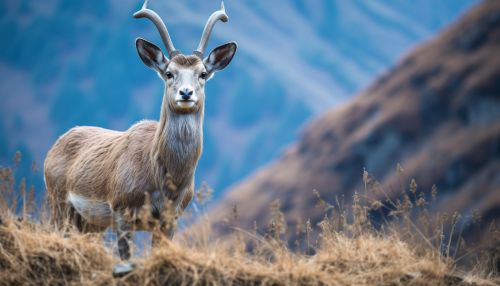Himalayan blue sheep
Taxonomy and Description
The Himalayan blue sheep, also known as the bharal or Pseudois nayaur, is a species of caprine animal native to the high Himalayan mountains. The species is characterized by its unique bluish-grey coat, which gives it its common name. The males are larger than the females, with heavier bodies and larger horns. The horns, found in both sexes, are ridged on the upper surface and grow throughout life. They are curved, forming a semicircle, and can grow up to 80 cm in males and 20 cm in females.
Distribution and Habitat
The Himalayan blue sheep inhabits the high mountain slopes of the Himalayas, including Nepal, Bhutan, India, Pakistan, and Tibet. They are typically found at altitudes of 3000 to 5500 meters above sea level. The species prefers steep terrain, cliffs and grassy mountain slopes where they graze on a variety of grasses, herbs, and mosses.
Behavior and Ecology
The Himalayan blue sheep is a diurnal species, most active in the early morning and late afternoon. They live in small groups, with herd size varying with the season. During the summer, herds are smaller, while in the winter, several herds may come together to form larger groups. The species has a lifespan of 12 to 15 years in the wild.
Conservation Status
The Himalayan blue sheep is currently listed as a species of Least Concern on the IUCN Red List of Threatened Species. However, it faces threats from habitat loss due to overgrazing by domestic livestock, and from hunting for its meat and hide.


